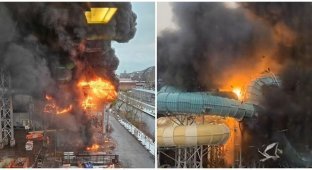3.5 thousand years ago, a meteorite explosion destroyed two large cities (8 photos + 1 video)
Scientists have proven that the city of Tell el-Hammam, which was located in the territory of modern Jordan, fell victim to a catastrophe during its heyday: in 1650 BC, a meteorite comparable in size to the Tunguska meteorite exploded above it. Its shock wave also destroyed the neighboring city of Jericho. The researchers reported this in Scientific Reports. 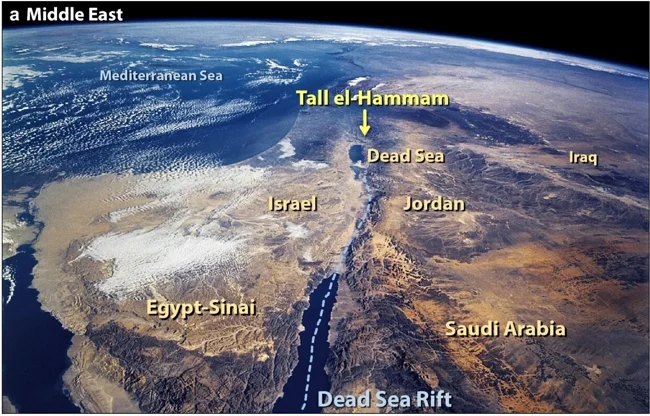
The power of the explosion was approximately 15 megatons of TNT equivalent - this is a thousand times more powerful than the explosion of the "Little Boy" atomic bomb in Hiroshima. An icy asteroid (or comet) entered the atmosphere at a speed of about 61,000 kilometers per hour and exploded at an altitude of about four kilometers. The air heated up to 1500-2000 °C and turned the city into one continuous fire - wood and fabrics caught fire, clay and metal began to melt. 
The rubble of the main palace of Tell el-Hammam with melted voids from burnt textiles
A few seconds later, a blast wave arrived at a speed of more than 1200 kilometers per hour - it blew the upper floors of buildings, the bodies of people and animals into small pieces. The entire population of the city, more than eight thousand people, perished. Within a minute, the shock wave reached the city of Jericho, which was located 22 kilometers to the west, demolished its walls and caused a large fire that burned the city to the ground. 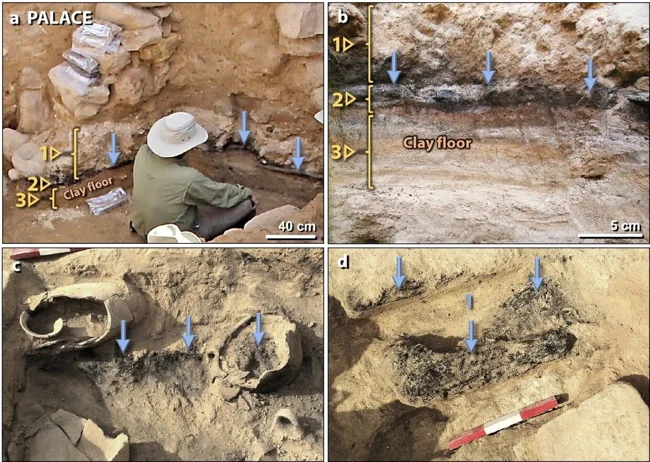
Excavations of the main palace - a clearly visible charred layer
A wealth of archaeological evidence allowed scientists to recreate the picture of the destruction of Tell el-Hammam. For example, the fragments of the upper 12 meters of the main palace were found in a valley several hundred meters from its foundation and first floors. The entire area of the city is covered by a 1.5-meter layer dating back to the Middle Bronze Age, with clear signs of exposure to high temperatures and a powerful shock wave in the form of molten materials, including metals. 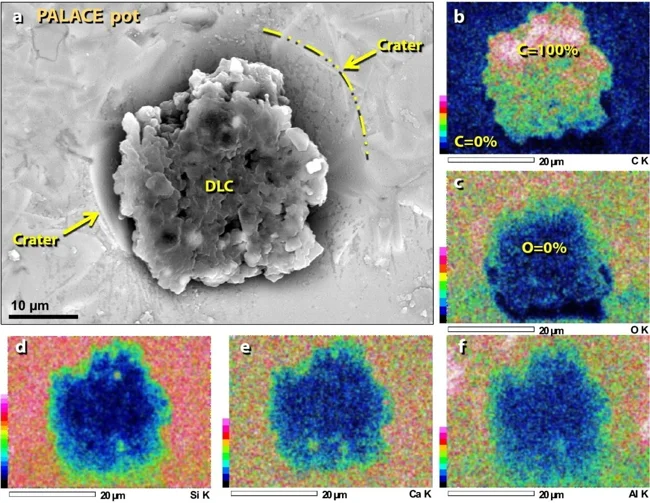
Carbon from temple and palace ceramics fused into a diamond-like state
Archaeologists have long paid attention to unusual artifacts found in the Tell el-Hammam area. American scientists decided to use a comprehensive approach to studying the ancient city - for example, they tested the found fragments in laboratory furnaces, examined them at the micro level, scanned them with various microscopes, using this data for computer models. 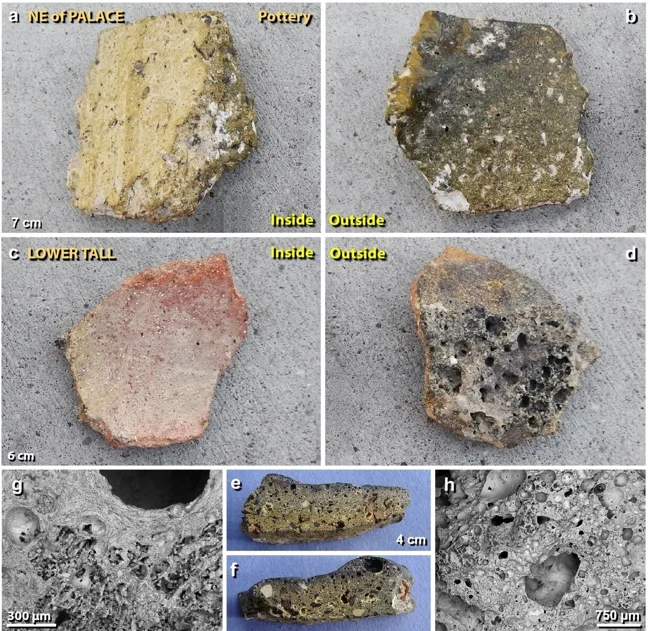
Melted ceramics found in different areas of the city of Tell el-Hammam
The researchers also determined how the blast wave spread through the city and what characteristics it had. To do this, they studied the location of the debris and their microstructure. Everything pointed to a short-term "shock" effect, which led to deformations of clay fragments and even cracks in quartz particles - one of the hardest minerals on Earth. 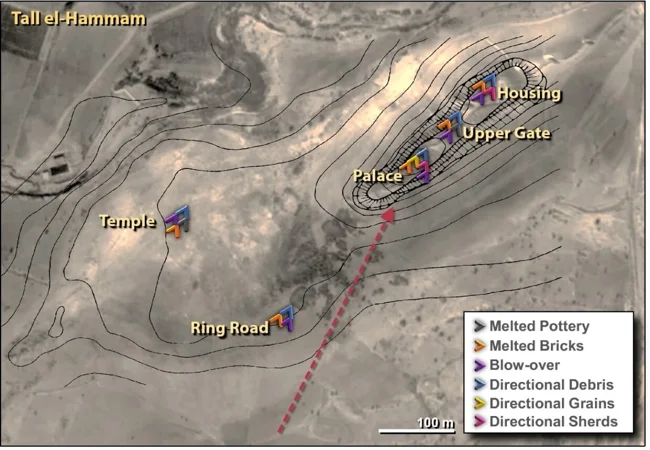
Shock wave direction reconstructed from debris scattering pattern
Based on the accumulated data, scientists have concluded that earthquakes, volcanic eruptions, lightning, forest fires, and wars cannot explain the entire picture of what happened. The only thing that fits in completely is the explosion of a large ice meteorite like the Tunguska meteorite. Computer modeling has confirmed that the Tunguska meteorite could have caused approximately the same destruction if it had fallen in the Tell el-Hammam and Jericho area 3,600 years ago. 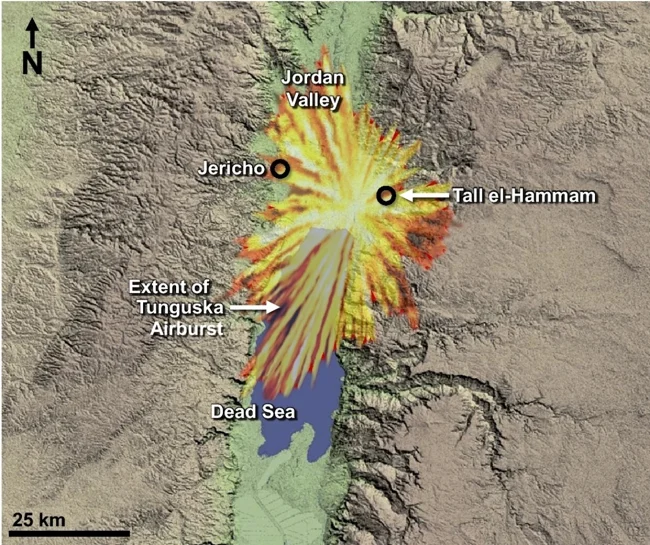
The Tunguska meteorite explosion superimposed on the site of the 1650 BC disaster
The disaster not only destroyed two major ancient cities, but also devastated the area for about 600 years, causing people to avoid settling there. Scientists believe the meteorite explosion scattered the Dead Sea water across the valley, effectively burying the soil in salt. Because of this, nothing could grow there until rare rainfall washed the salt from the fields back into the sea. 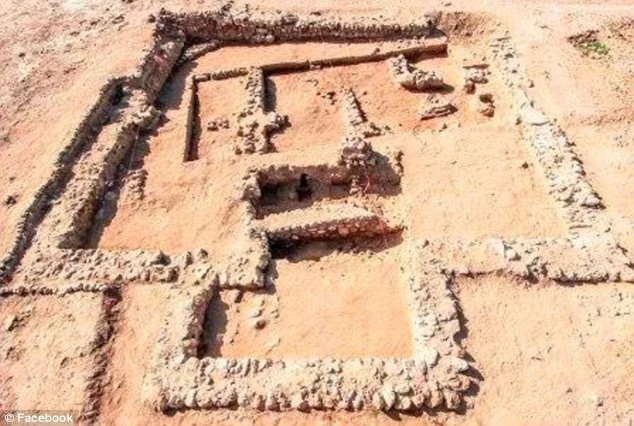
According to researchers, this event could have formed the basis of the biblical legends about Sodom and Jericho. The first city, according to the Bible, was rich and prosperous, but for the sins of its inhabitants, God allegedly poured down on it "a rain of sulfur and fire from heaven", destroying the city, its surroundings and "all the vegetation of the earth". Jericho is described as an impregnable city that the Jews could not take by storm, and only after the sound of sacred trumpets did its walls fall. As a result, the conquerors completely destroyed Jericho and burned it.












